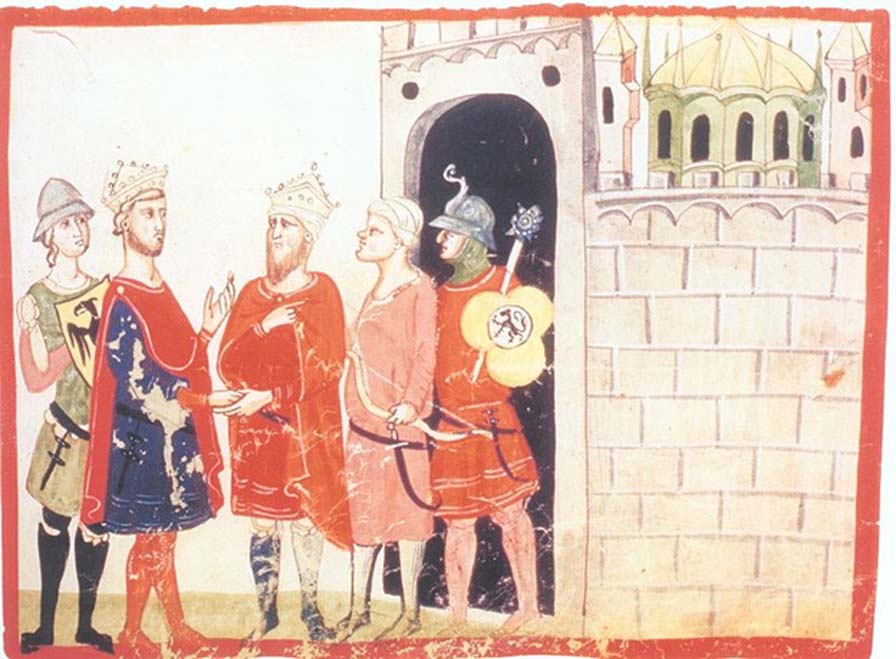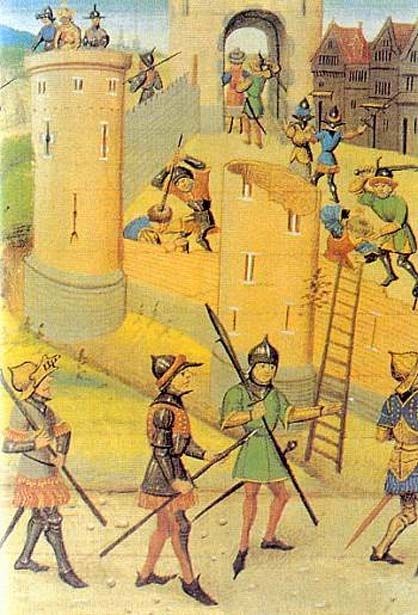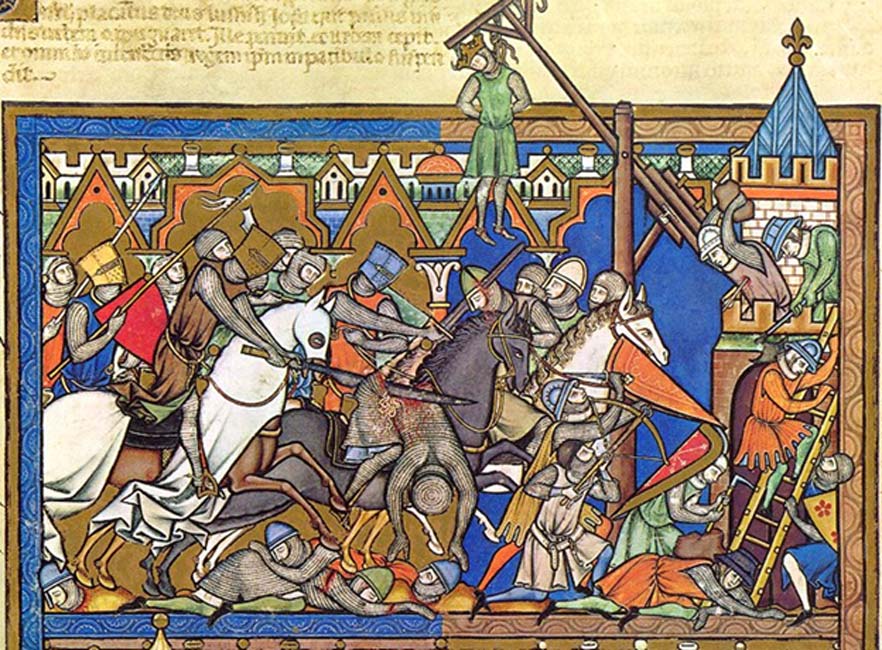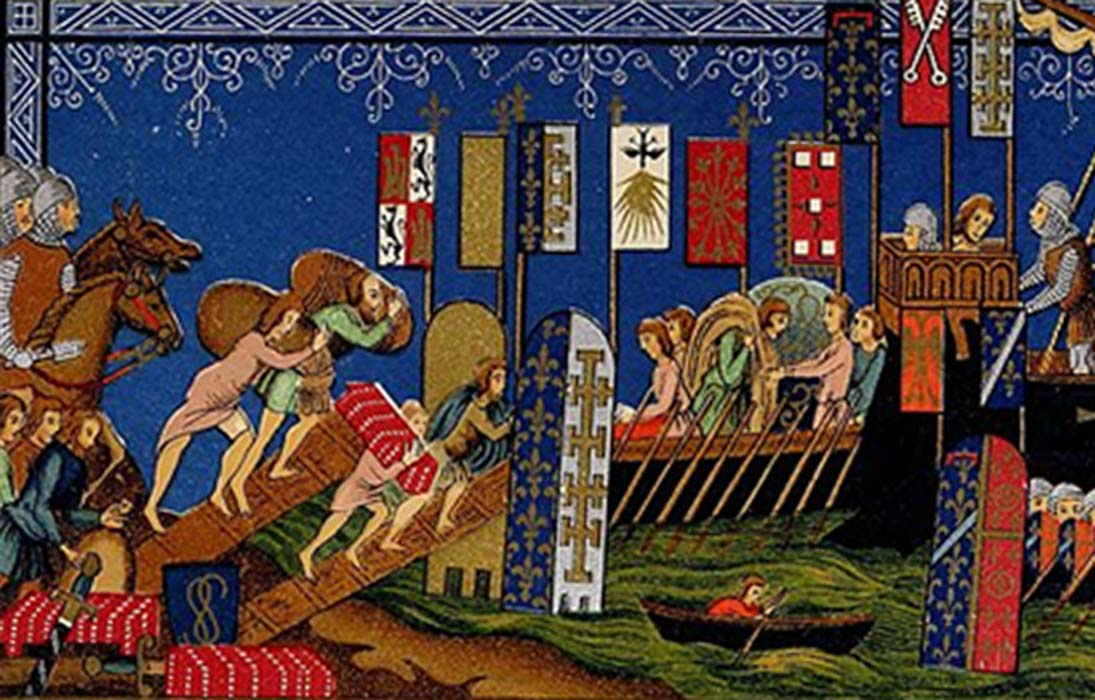
The Seven Most Deadly Weapons of the Crusades, or Were There Eight?
Any weapon can be deadly when properly used, so by no means is this list all inclusive. The timeline of the Crusades spans from 1096 AD to 1272 AD, with the 9th Crusade dealing with the Muslim Near-East and North-Africa. Of course, there were many other Crusades all over Europe during the same period. This list does not include the many minor Crusades that were to follow well into the 14th and 15th centuries. Furthermore, many of the soldiers who participated in the Crusaders were paid fighters who owned or were supplied their armor and weapons. As for the peasants who came along, they only had simple weapons, mostly implements used for agriculture, since they could not afford any luxuries of warfare. This is not to say that the weapons were inferior. So, what were the worst tangible (or perhaps invisible) weapons enemies would have encountered during the Crusades?
Frederick II (left) meets al-Kamil (right), in a manuscript illumination from Giovanni Villani's Nuova Cronica. (Public Domain)
Number 7: Mace or Club
The mace is a type of club. When it comes to length, it varies between two or three feet, or 70 to 90 centimeters. The shaft was made of wood while the ball was usually of iron. The ball may have had flanges. While this was more suited as an infantry weapon, some horsemen could also have carried the mace. However, their mace was much longer to enable the rider to reach down and swipe his opponent. The purpose of the mace is to crush bone since it is a top-heavy weapon. One blow from a mace could break a man’s bones easily without causing a wound. However, many maces had flanges. While a ball can crush, a mace with flanges can penetrate flexible armor in order to crush the bone underneath, possibly causing the victim to hemorrhage.
Saladin's attack on Jaffa (Public Domain)
Number 6: Spear
The spear is a simple handheld weapon. However, the spear has proved to be an effective close combat weapon. The length of the spear is between six to eight feet (1.8 – 2.4 meters). The purpose of the spear in combat is to keep the enemy at a distance by thrusting at him or if the infantryman in question has extra spears or a sidearm he can rely on, he could throw it at the enemy. Spears, while important as the sword, were used not only against infantry, but also against cavalry charges to great effect. The purpose of the spear is to pierce, not tickle. A good spear thrust can pierce and shatter bone, thus causing immediate or slow death.
- Why the Crusades Were Not a ‘Clash of Civilizations’
- The Children's Crusade: Thousands of Children March to Holy Land but Never Return
- Godfrey of Bouillon: Leader in the First Crusades and Ruler of the Kingdom of Jerusalem
Miniatura de la Biblia Maciejowski (Public Domain)
Number 5: Arrows
The arrow released by the bow provided a nasty punch to the enemy. Arrows used against the cavalry would have been designed to pierce armor, while arrows used against ill-equipped infantry likely had barbs as to make them more difficult to pull out of flesh. Those who fought at the Battle of Dorylaeum in 1097 during the First Crusade discovered this to their peril, when they fought the Seljuk Turks, who fired volley after volley of arrows. Even though the Crusaders won the battle, it was costly and they had learned a valuable lesson about their enemy’s tactics. The purpose of the arrow is simple, to pierce and stop the opponent from reaching the archer. However, many Crusaders soon learnt to place padding under their chainmail. In doing so, the arrows were said to have passed through the chainmail only to lodge into the padding, without piercing the soldier. While killing is the objective, maiming can be just as sufficient. However, if an archer cannot kill or maim his opponent, he can also be a nuisance and harass him by showering arrows down upon him.
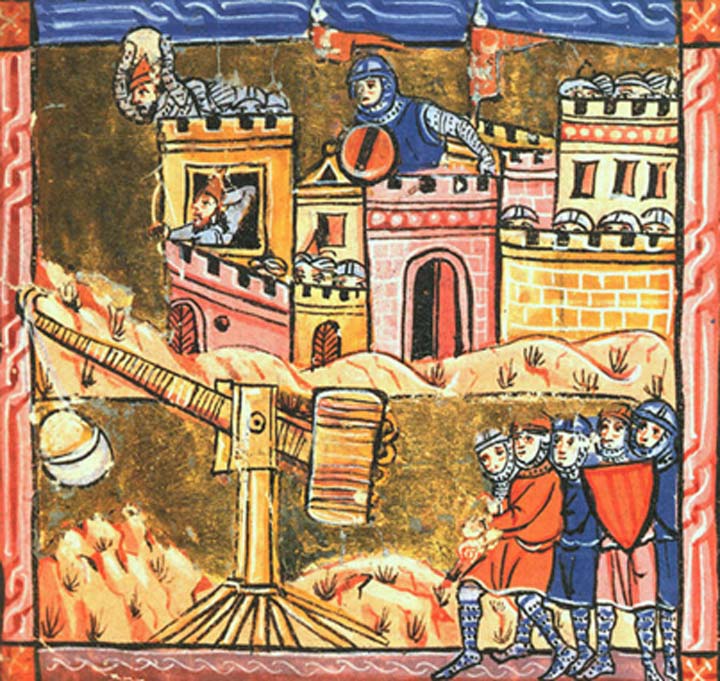
Siege of Acre (Public Domain)
Number 4: Trebuchet
The trebuchet is a siege engine, first developed in China and brought to the west by the armies of Islam where it was first introduced during the First Crusade. However, there is much debate as to when Western Europeans began using the contraption, since some argue for a much earlier time. The trebuchet required many men to operate it due to its sheer size and weight. The amount of energy needed to send a projectile down range, required a group of 40 to 250 men pulling between 40 and 125 ropes. This could generate enough force to send a stone projectile of 59 kilograms or 130 pounds in a relatively flat arc for a distance of up to nearly 150 meters or 492 feet. The purpose of the trebuchet was to weaken and bring down walls. Not only could it fire stone projectiles, it also delivered incendiary objects. While stone is meant to crush, objects of a flammable nature were hurled over castle or city walls to set the various buildings on fire. Of course, to start a plague, just load up the bodies of plague victims and send them over the walls, as the Mongols did at Caffa in 1347.




